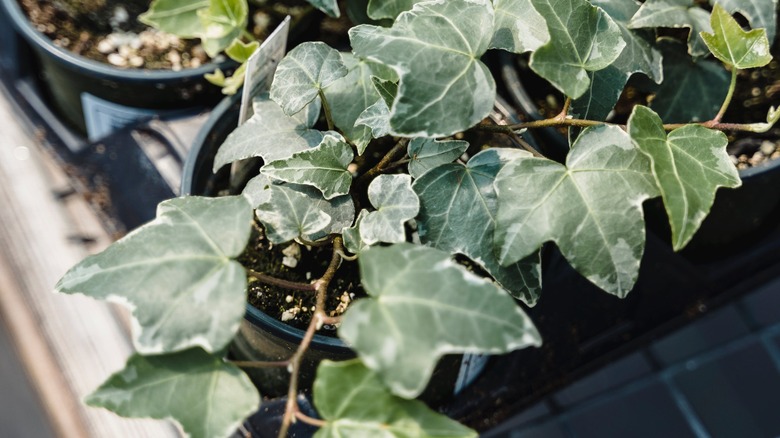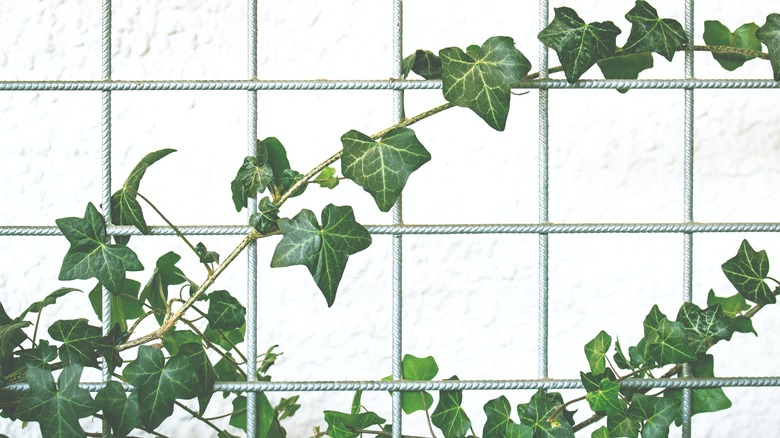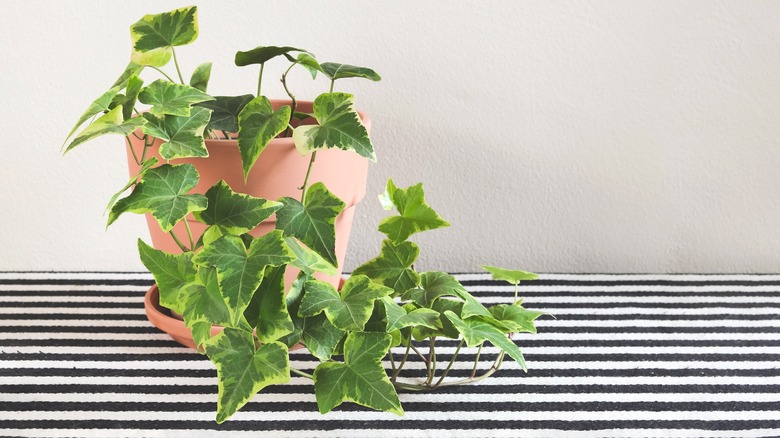Don't Make This Major Mistake When Growing Ivy Indoors
Ivy plants are a popular choice for indoor gardening due to their ability to thrive. However, even the hardiest of ivy plants can fall victim to common mistakes that may lead to poor health and a lackluster appearance. One of the biggest errors people make when growing ivy plants indoors revolves around light.
Ivy plants are an excellent choice for indoor gardening, and not just because they are adaptable to different temperatures and humidity levels, allowing them to flourish in a range of indoor environments. According to NASA's Clean Air Study, they are also excellent air purifiers and can remove harmful toxins like benzene, formaldehyde, xylene, and toluene from the air, making your indoor environment healthier. Of course, they also have aesthetic appeal. With their trailing vines and delicate leaves, ivy plants can add a touch of elegance to a home. They can be trained to climb up walls or hang from baskets, and they don't require much pruning or grooming.
What happens when ivy plants don't get enough light
A common mistake when growing ivy indoors is not providing enough light, and that can harm the plant. These dainty plants thrive in bright light, though not direct sun. Ivy plants are naturally adapted to growing in indirect light, and they require a lot of light to thrive. Insufficient sunlight can not only lead to a sparse, unattractive appearance that detracts from the plant's natural beauty, but they may also not grow to their full capacity.
Many people make the mistake of placing their ivy plants in lowlight areas, such as corners or against walls. This can lead to weak and spindly growth, and can even cause the plant to become leggy and weak, with stems that stretch up toward the light to reach it. They may also lose their vibrant color and become dull and pale, making the plant look unhealthy and neglected.
Finding the perfect light balance for indoor ivy
While ivy plants need light, too much direct sunlight can lead to permanent damage. This can be particularly problematic for ivy plants with variegated or white-edged leaves. These varieties are more sensitive to the sun, and the leaves can become scorched and brown if given too much. In addition, just as with too little light, too much can cause the plant to lose its vibrant color, making it look lackluster.
When you can give your plant just the right amount of light, you provide it with the energy it needs to thrive without causing damage. East- or west-facing windows are perfect for ivy, as they provide gentle, indirect light that is easy on the plant. Never place your ivy plant in direct sunlight, especially during peak hours. Consider using grow lights to provide your plant with enough light if your home is particularly dark. By finding the perfect balance of light, you can keep your ivy plant healthy, happy, and looking its best.


